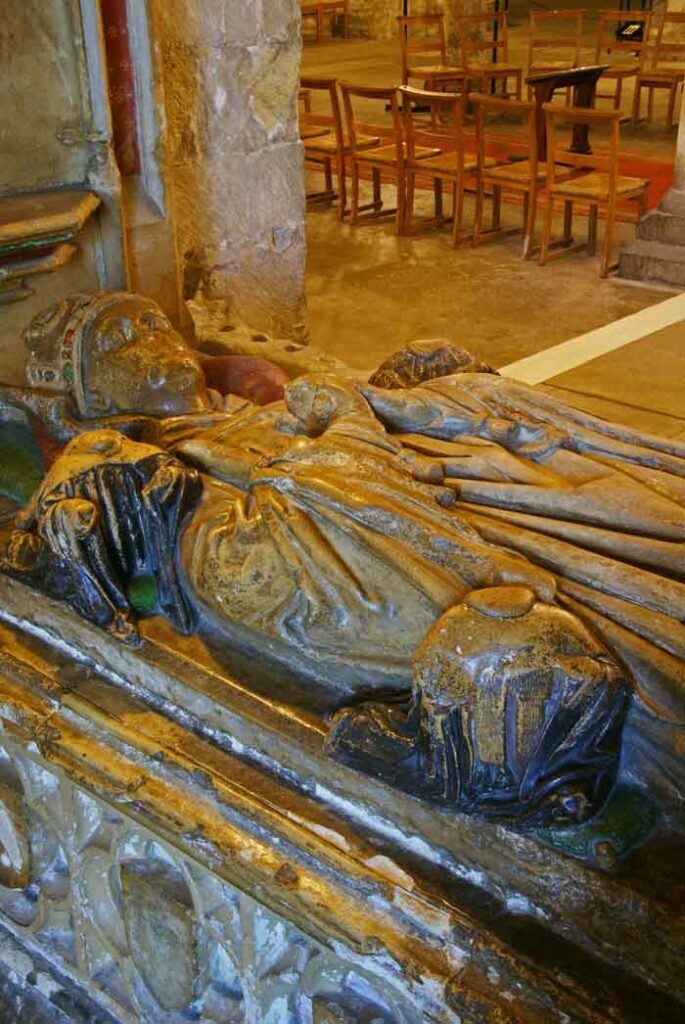Archbishop of Canterbury (1486–1500), and cardinal (1496)
For more details on the Archbishop Morton click here.
Morton was influential in bringing Henry VII to the throne in 1485 and soon after was appointed both Archbishop of Canterbury and Lord Chancellor. His will, written in 1500 declined a grand tomb choosing instead a modest interment beneath the western crypt floor covered by a large slab of Purbeck Marble, now much mutilated. His burial was in the privileged position before the altar of the Virgin Mary in the Chapel of Our Lady Undercroft.
The slab of Purbeck Marble once possessed a commemorative figure as the indent is still visible for the brass plate. The brass was probably removed during the Civil War when Parliamentarian soldiers removed all the plates in the cathedral for melting down for armaments. In removing the brass the marble slab may have been broken, as by 1670 the grave contents were open to pilfering. When the grave was opened that year by Ralph Sheldon (the archbishop’s nephew) only the skull remained. Ralph removed the skull and kept it in a lead-lined box. Upon his death the box passed to his niece and finally made the journey to Stonyhurst College in Lancashire. In 1991 the college authorities decided to have the skull forensically tested to assist in a decision as to whether or not to return the box and contents to Canterbury Cathedral. While the results were consistent with what was known of Archbishop Morton no decision to return the skull was made and the skull is still in the college’s collection.
The monks meanwhile decided a standing structure would be a more fitting memorial for the late Archbishop and within a few years of his burial a site for a monument was chosen between the arcade arches in the south aisle of the western crypt and immediately south of the burial. The archbishop’s cenotaph was once grand with an effigy upon a chest with side shields. It has since been damaged, although its former splendour is still discernible. The canopy echoes the enclosing arch of the crypt vault and contains much sculptural ornamentation. The monument and canopy are painted and consequently it is difficult to see the underlying stone. From fragments visible where damaged it is likely to be Caen Stone.

